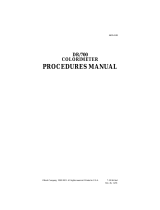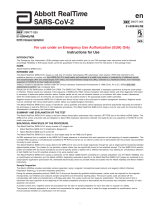Page is loading ...

EDGE Application Guide Page 1 of 2
How to Extract Fat from Food Samples that Do Not Require Acid Hydrolysis on the EDGE 2021-01
www.cem.com © 2018 CEM Corporation
All rights reserved. This may not be reproduced or published without written permission from CEM.
How to Extract Fat from Food Samples that Do Not Require Acid
Hydrolysis on the EDGE
Introduction
Fat extractions are required by food manufacturers for quality assurance and nutrition facts. Some foods do not require an acid
prehydrolysis step to achieve optimal recoveries. Please use this method to extract foods that do not require acid hydrolysis.
Sample Types
Foods with unbound fat.
Sample Preparation
1. Mill or homogenize the food sample.
Note: Is the food wet? Please pre-dry your sample in an oven at 100 °C for 1 hour prior to milling.
2. Prepare the EDGE by priming a solvent line with petroleum ether and programming in the EDGE method at the bottom of this
protocol.
3. Place a S1 stack of Q-Discs (C9+G1+C9) into the bottom of a Q-Cup.
4. Weigh 2 g or less of the food sample into a Q-Cup. Record the weight.
Note: Use lower sample sizes (2 g or less) for fattier foods like nut butters.
5. Place a Q-Screen on top of the Q-Cup, and insert it using the Q-Screen tool.
6. Place the Q-Cup in the EDGE rack. Place pre-weighed vials with weight recorded in rack.
Note: This method requires two 40 mL or 60 mL vials.
EDGE Extraction
7. Prepare the EDGE by priming a solvent line with petroleum ether or the desired solvent and programming in the EDGE
method at the bottom of this protocol.
8. Extract the sample using the EDGE method below.
Post Extraction Work Up
9. Remove the extract vials from the rack.
Note: The resulting extract may have a yellow tint if the sample is higher fat content.
10. Place vials in an evaporator at 60 °C, and allow all solvent to evaporate.
Note: Fat will remain as an oily, viscous layer at the bottom of the vial.
11. Place vial in an oven for 1 hour at 100 °C to remove any residual moisture or solvent.
12. Allow vial to cool, and weigh.
Note: % Recovery = ((Vial1 after – Vial1 before)+ (Vial2 after – Vial2 before))/Sample weight x 100%
Where vial after is the weight of the vial after evaporation and vial before is the weight of the vial before extraction
Method Development Tips
• The method above is a conservative method applicable to most sample types. Please note that a more optimized method for
specific samples may be available. Please contact Molecular Support for more information.
• For high salt containing samples, it is recommended that a daily system wash with water and then a system wash with
petroleum ether are done to prevent salt buildup.
Cycle Solvent Top add
(mL)
Bottom add
(mL)
Rinse
(mL)
Temperature
(°C)
Hold
(mm:ss)
1 Petroleum ether 30 0 10 140 05:00
2 Petroleum ether 30 0 10 140 05:00
Wash Petroleum ether 20 - - 30 00:15

EDGE Application Guide Page 2 of 2
How to Extract Fat from Food Samples that Do Not Require Acid Hydrolysis on the EDGE 2021-01
© 2018 CEM Corporation
• Other extraction solvents, such as diethyl ether and hexane, can be used to extract fat.
• If recovery is lower than expected with this method, increase hold time for each cycle by 1 minute. Also, be sure that your
sample is milled before extracting and that the filters are adequately compressed by the Q-Screen.
• If increasing hold time does not improve recovery, it may be that your sample requires acid hydrolysis for optimal recovery.
Please consult the application guide “How to Extract Fat from Food Samples that Require Acid Hydrolysis on the EDGE.”
/




